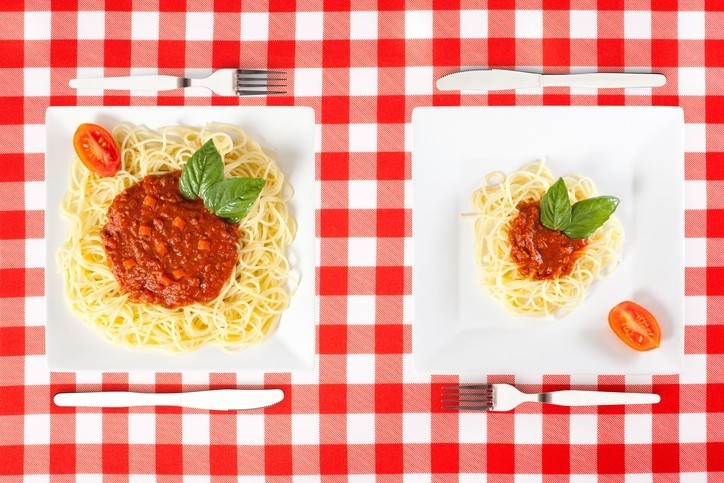Can larger portion sizes encourage healthy food consumption?

The study, ‘Might bigger portions of healthier snack food help?’, consists of two experiments conducted in France with young adults and adolescents.
Researchers examined the relationship between portion size and food intake — known as the portion size effect — to learn more about how this correlation impacts the consumption of healthy and unhealthy foods.
Promoting healthy food consumption
There is a significant amount of published research highlighting that people overconsume unhealthy foods when portion size doubles. As a result, the key motivation for this research project was to see whether a similar approach could be adopted for promoting healthy foods.
“Why not use large portion sizes to promote the consumption of healthy foods?”, questioned Carolina Werle, Lead Researcher of the study and Professor in the Marketing Department at Grenoble Ecole de Management (GEM).
While portion sizes vary from country to country, there is scientific evidence that shows large portion sizes increase consumption.
A meta-analysis by Zlatevska, Dubelaar and Holden (2014) revealed that when portion size doubles, consumption increases on average by 35%.
Previous research also highlights that portion size effects are strong because food containers and packaging give an indication of the amount to be consumed, which is referred to as the consumption norm.
Study 1: Portion size and healthy food intake
In Study 1, the researchers analysed whether portion size affects consumption in a controlled laboratory setting. As previous research by Vartanian, Herman and Privy (2007) indicated that social influences have a considerable impact on our intake of food, the first study took place in laboratory cubicles, where participants were isolated from each other.
While most recent research confirms portion size effects for unhealthy foods, the study’s researchers investigated the effects of healthy foods too as there are potential implications to promote healthy food consumption.
“For example, if you want your kid to eat more veggies, serving a larger portion can be a successful strategy,” Werle noted.
Most people would only expect to see a rise in the consumption of unhealthy food in this scenario. However, the researchers found that doubling portions increased the consumption of both healthy (apple chips) and unhealthy snacks (potato chips).
While this increase in portion size positively correlates with the consumption of healthy and unhealthy snacks, Werle is keen to emphasise that as consumers, we do clearly differentiate these foods: “Consumers distinguish the two categories of food very clearly because tastiness and healthiness perceptions are very different.”
Study 2: Environmental Cues
The objective of Study 2, which took place in a movie theatre, was to examine the relationship between portion size effect and consumption in an environment where food-related cues are present.
Replacing apple chips with baby carrots, the researchers wanted to investigate whether portion size effect findings would still be the same with an alternative healthy snack. In addition, they “decided to use baby carrots because they are not as sweet as apple chips and they might be perceived as tasty.”
When exposed to a food-related movie, the high-school student participants were less influenced by portion size than if they had been exposed to a movie unrelated to food.
“The environment influences our consumption choices and our susceptibility to external cues, such as portion size,” Werle highlighted.
The future for food manufacturers
Through understanding portion size effect, this research may have far-reaching implications for food manufacturers of processed food, particularly healthy snacks.
As this research demonstrates that food consumption responds positively to portion-size changes across healthy and unhealthy foods, these can, therefore, be used to “induce an increase in healthy food consumption”.
“Consumption of healthy foods, such as carrots and apple chips used in this research, can be encouraged by offering such foods in larger portion sizes,” Werle observed .
Source: Food Quality and Preferences Journal
“‘Might bigger portions of healthier snack food help’”
Available online ahead of print, https://www.sciencedirect.com/science/article/pii/S0950329318305159
Authors: Carolina Werle, Chris Dubelaar, Natalina Zlatevska and Stephen Holden
<Caption: Healthy food manufacturers may want to consider larger portion sizes to appeal to consumers and encourage healthy eating>











